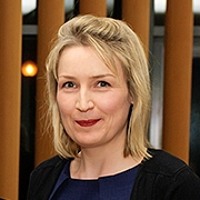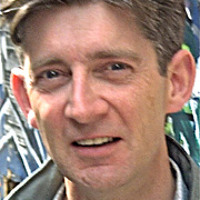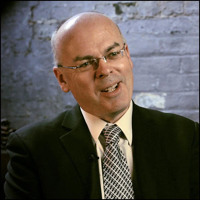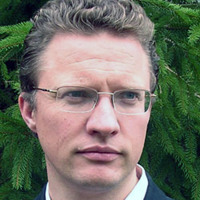With two sets of lovers, a royal betrothal, and a troubled marriage at its centre, A Midsummer Night’s Dream has long been associated with the heady and complex passions of youthful love. The decision then to shift the play’s setting from the court and forest of Athens to a modern nursing home for the elderly and infirm is certainly a bold one and it throws open the possibility of seeing the play from a new and fresh perspective. The opening strangeness of Gavin Quinn’s Dream sets the tone for the rest of the production; during one of the daily exercises designed to keep the elderly active and busy, the frail residents dance, shuffle with zimmer frames, roll about in their wheelchairs, or sit immobile and senile, to Johnny Cash’s “Ghost Riders in the Sky”, before forming a conga line with their carers. On several fronts, the old folk’s home setting is a stroke of genius. Notably, while Hermia and Lysander’s relationship lacks the fiery vigour of youth, it is imbued with a new tenderness and thoughtfulness. The power dynamics of the play generally map neatly onto the new setting; Duke Theseus and Hippolyta become a head clinician and matron; the lovers the patients under their care; and Egeus is now a son angered by his mother’s misplaced senescent affections. In this world, seniors are disempowered and are open to abuse; Theseus backs Egeus, who no doubt pays for his mother’s upkeep, by urging Hermia to marry Demetrius, whose suit her son approves. In Egeus’ request that his mother suffer the ‘ancient privilege of Athens’ – death – we see that euthanasia is the price for inconveniencing or disobeying one’s children. Trapped in enfeebled bodies, dependent on their children and carers, and oppressed by a corrupt system, only in their dreams are the elderly free.
Thus in Act 2, when the play moves to the forest, night settles on the nursing home lounge and it becomes a dreamscape where anything is possible. Here, the lovers play out their fantasies unhindered by walking sticks; Theseus and Hippolyta are transformed into Oberon and Titania rulers of the Fairy world; and the residents become elegant, energetic faeries. In these night-time scenes, the dominance of the nursing home in the minds of its patients and employees is everywhere in evidence; Oberon, for instance, administered the love potion to Titania through a drip. In places however, the setting proved to be a hindrance and inconsistencies appeared at times. For their first meeting, Titania and Oberon arrived on stage standing on wheelchairs and the pair remained static throughout their exchange. This strange behaviour may have been intended to imply their otherworldliness, but it weakened the actors’ performances. For instance, Titania’s speech on her close friendship with her Indian votaress, which contains some of the play’s most beautiful poetry, was toneless and lacklustre; the audience lost out on the pleasure to be had from these lines and was denied a fuller understanding of Titania’s character. Later, Hermia and Lysander dragged on duvets but discarded them in their pursuit of love; at this point, the stage resembled the aftermath of a teenage slumber party, but ultimately it just looked cluttered. Similarly, Titania’s bower was formed from an assemblage of flowery pillows and blankets; considering the devotion to the medical setting elsewhere, a wheeled hospital bed would have made more sense in the overall scheme.
The nursing home setting also raised problems for the depiction of the ‘Rude Mechanicals’. In Shakespeare, these working class figures gather to put on a play to celebrate Theseus and Hippolyta’s wedding day and their adventures are the comic highlights of the play. In the Abbey production, the Mechanicals comprised a motley crew: Bottom was an orderly; Snug was a painter decorating the home; Snout and Flute were patients; and Quince’s connection to the care home was uncertain. Why such a group would form an impromptu playing company was unclear. The Mechanicals’ play, and the harsh response to it, might have been part of the elder abuse hinted at earlier in the production, in Egeus’ treatment of his mother, but the logic of it could have been better explained. ‘The most lamentable comedy and most cruel death of Pyramus and Thisbe’ could have been presented, for instance, as an activity for seniors, like the dance sequence that opened the play. In the Mechanicals’ concluding dance, the incongruity of seeing seniors rave was initially comic but then, as it stretched on, simply awkward – perhaps this was the point.
In its stage design, the Abbey’s Dream clearly drew inspiration from Peter Brook’s seminal production of the play for the RSC in 1970. Although large saffron yellow curtains were used in places, the care home set was essentially a brightly-lit white box. Against the white background, the colours of the costumes popped: some patients wore pastel blues and greens that linked them to the furniture and medical scrubs of their carers, while, for their nocturnal wanderings, Demetrius donned a yellow suit and Lysander sported flower-patterned pants.
At several points throughout the production, the characters recited various Shakespearean sonnets. While these added little to the play, they did give some characters a firmer voice; Cobweb, for instance, was a dejected hospital inmate by day but in the forest spoke eloquently to the audience. Of particular note was the decision to add lines in modern English to gloss Shakespeare’s words which suggests that there was a fear that Dream would not be understood, or, that the audience would not find it funny. Overall, the glosses proved distracting and were redundant. For instance, the fine performances of the actors meant that having a drug-addled Lysander shout at Hermia “Didn’t you figure out that I left you because I don’t love you?” was unnecessary. In considering the Abbey’s Dream as a whole, its innovations and its shortcomings, Puck’s epilogue springs to mind; the production certainly has some failings to “reprehend”, but there is much of interest and originality in its treatment of the play’s “weak and idle theme”.
– Dr. Edel Semple, University College Cork.









 Trinity’s ongoing series of staff post-graduate seminars has now made a podcast available for this term’s paper by Prof.
Trinity’s ongoing series of staff post-graduate seminars has now made a podcast available for this term’s paper by Prof.